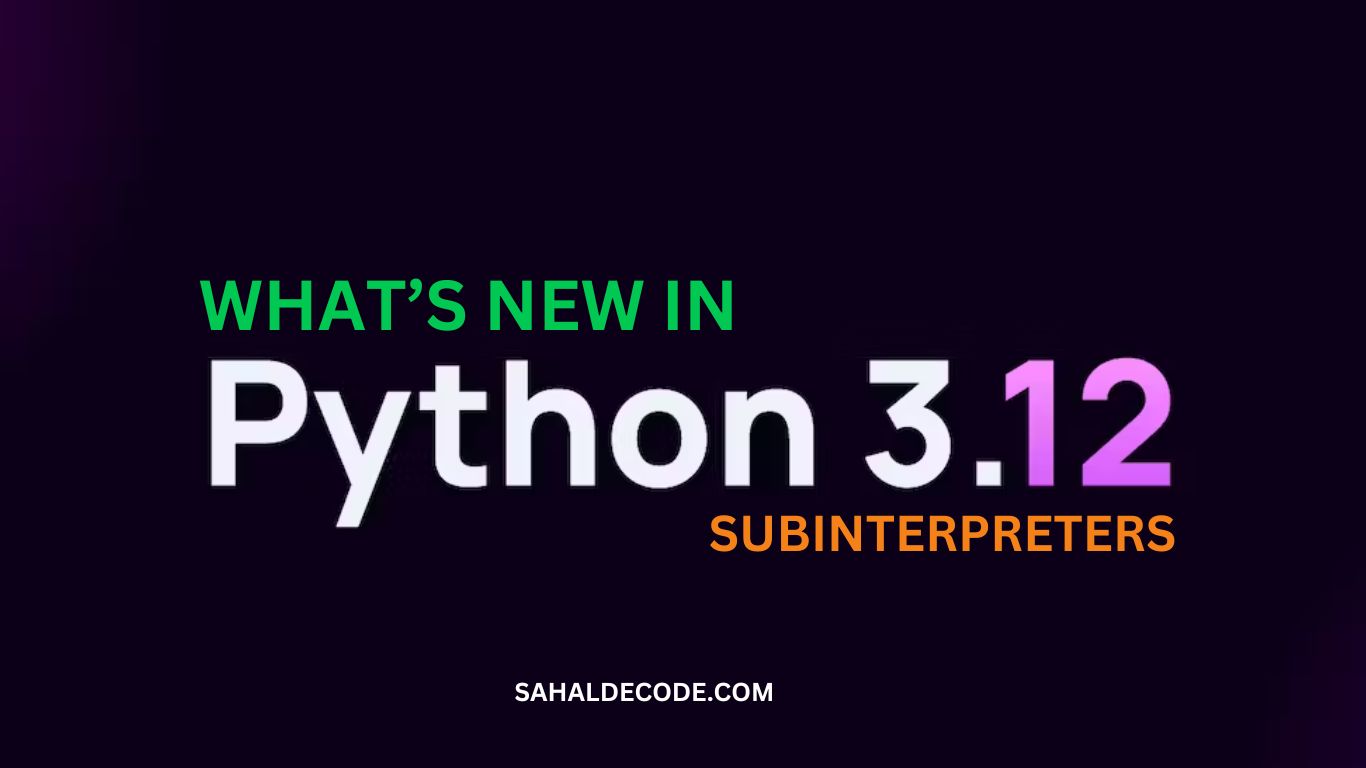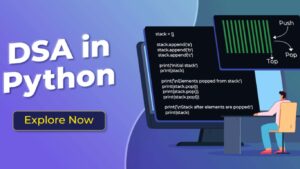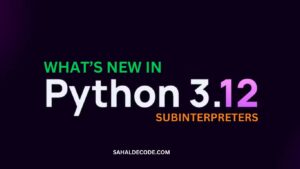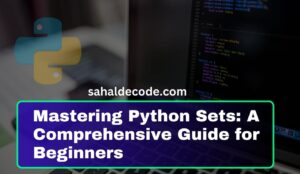python, a popular and versatile programming language, has undergone significant updates in its latest version, Python 3.12. One notable addition is the introduction of subinterpreters, a feature that revolutionizes the way Python handles concurrency and performance. In this article, we delve into the world of Python 3.12, focusing on the groundbreaking features of subinterpreters, exploring their benefits, working mechanisms, use cases, and more.
Introduction to Python 3.12
Subinterpreters are a significant addition to Python’s arsenal, designed to tackle the challenge of concurrency in a more efficient and developer-friendly manner. Concurrency, in the context of programming, refers to the ability of a program to execute multiple tasks simultaneously. Traditionally, Python used Global Interpreter Lock (GIL), which allowed only one thread to execute at a time, making it challenging to harness the full power of modern multi-core processors.
Python 3.12, the latest installment in the Python programming language software, comes with a plethora of enhancements and features. These updates aim to make Python more efficient, user-friendly, and capable of handling modern development requirements.
Here are Python Step-by-Step Bignner Tutorials
Understanding Subinterpreters
Subinterpreters can be considered as mini-Python interpreters within a single Python process. Each subinterpreter operates independently, with its own global state, allowing for efficient execution of Python code concurrently.
Benefits of Subinterpreters
Subinterpreters bring about a range of advantages for Python developers and applications. They enhance concurrency and provide isolation, resulting in improved performance and responsiveness of applications.
Note: The terms interpreter and subinterpreter get mixed together fairly commonly. For the purposes of this tutorial, you can view the main interpreter as the one that runs when your program starts. All other interpreters who start after that point are considered subinterpreters. Other than a few minor details, sub-interpreters are the same type of object as the main interpreter.
Working Mechanism of Subinterpreters
To comprehend the significance of subinterpreters, it’s essential to grasp how they function within the Python ecosystem. These mini-interpreters enable parallel execution of Python code within a single process.
1. Improved Concurrency
With Subinterpreters, Python applications can achieve true parallelism, making them more responsive and efficient when handling concurrent tasks. This improvement is particularly significant for applications that require high levels of parallel processing, such as web servers and data-intensive applications.
2. Enhanced Isolation
Each Subinterpreter runs independently, ensuring that one thread’s actions do not impact the others. This enhanced isolation simplifies the development process and reduces the likelihood of unexpected interactions between threads.
3. Simplified Code
Subinterpreters make it easier to write concurrent code. Developers can now focus on the logic of their application without having to wrestle with complex synchronization mechanisms, leading to cleaner and more maintainable code.
4. Scalability
Python applications that leverage Subinterpreters can scale better on multi-core machines. This scalability is crucial for modern applications that need to handle a growing number of users and requests.
You’ll find many other new features, improvements, and optimizations in Python 3.12. The most relevant ones include the following: “Reference by Real Python“
- Even better error messages
- Support for the Linux
perfprofiler - More powerful f-strings
- Improved static typing features
Use Cases of Subinterpreters
Subinterpreters find valuable applications in scenarios where concurrent execution is crucial, but isolating the execution environments is equally important. This includes web servers, network applications, and more.
Comparison with Threads and Processes
When juxtaposed with traditional threading and multiprocessing, subinterpreters offer distinct advantages, including efficient memory usage and enhanced concurrency.
Python 3.12 Features Beyond Subinterpreters
Python 3.12 not only introduces subinterpreters but also brings various other features and improvements, making it a noteworthy upgrade for developers.
Master Python Coding: In-Depth Tutorials and Practical Examples
How to Implement Subinterpreters
Implementing subinterpreters requires a fundamental understanding of their behavior and utilization. Here’s a step-by-step guide to integrating subinterpreters into your Python projects.
Best Practices for Utilizing Subinterpreters
To maximize the benefits of subinterpreters, adhering to best practices is vital. These practices ensure the effective utilization of subinterpreters while maintaining application stability and performance.
Potential Challenges and How to Overcome Them
While subinterpreters offer numerous advantages, they may present challenges during implementation. Understanding these challenges and their solutions is crucial for successful integration.
Community Reception and Feedback
The Python community has been keenly awaiting the release of Python 3.12, particularly due to the introduction of subinterpreters. The reception and feedback from the community shed light on the impact and potential of this new feature.
How to Use Subinterpreters
To start using Subinterpreters in Python 3.12, you’ll need to familiarize yourself with a few key concepts:
1. PyConfig and PyConfig_SetInitThreads()
PyConfig is a new configuration structure introduced in Python 3.12 that allows you to set various interpreter-specific options. PyConfig_SetInitThreads() is a function that initializes Subinterpreters.
2. Py_NewInterpreter()
This function is used to create a new subinterpreter. You can use it to isolate specific tasks or modules in your application.
3. Py_EndInterpreter()
When you’re done with a Subinterpreter, use this function to clean up and release its resources.
Conclusion
Python 3.12’s introduction of Subinterpreters marks a significant milestone in the language’s evolution. With improved concurrency, enhanced isolation, simplified code, and scalability, Python is now better equipped to handle the demands of modern, multi-core systems. As a developer, embracing Subinterpreters can lead to more efficient and responsive Python applications.
So, whether you’re a seasoned Pythonista or just getting started with the language, it’s time to explore Python 3.12 and its game-changing Subinterpreters. Upgrade your coding arsenal and harness the full potential of Python’s concurrency capabilities!
The Overapi Collection of Python Cheat Sheet resources
Frequently Asked Questions (FAQs)
What are subinterpreters in Python 3.12?
Subinterpreters in Python 3.12 are mini-interpreters within a single Python process that allow for parallel execution of Python code independently.
How do subinterpreters enhance concurrency?
Subinterpreters enhance concurrency by enabling parallel execution of Python code while maintaining isolation and independence.
What applications benefit from using subinterpreters?
Applications like web servers and network applications that require concurrent execution with isolation can significantly benefit from using subinterpreters.
Are subinterpreters a replacement for threads and processes?
Subinterpreters are not a direct replacement for threads and processes but offer advantages like efficient memory usage and enhanced concurrency.
How can developers implement subinterpreters in their Python projects?
Developers can implement sub-interpreters by understanding their working mechanism and following specific steps outlined in the Python documentation.










